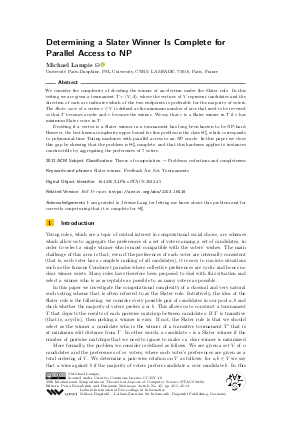LIPIcs.STACS.2022.45.pdf
- Filesize: 0.66 MB
- 14 pages

 Creative Commons Attribution 4.0 International license
Creative Commons Attribution 4.0 International license













Feedback for Dagstuhl Publishing